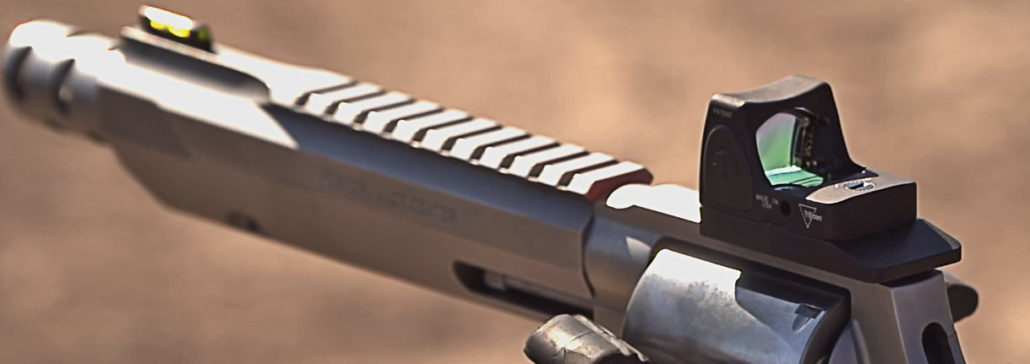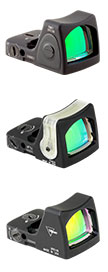Getting Started with a Red Dot Sight

Red dot sights have become quite common in the handgun hunting world. In this blog, we join Wade at the range and see what his process is when getting a new red dot.
Straight out of the package most red dot sights, it appears, are pretty easy to use for your average hunter out there. And that’s who I’m talking to, the guy that’s going to set this up for hunting. Taking it down to the range, spending some time, obviously getting your first zero set up at a close distance and then beginning to work backward from there. It’s interesting to me to talk to long-term handgun hunters that absolutely love the red dots for a lot of their setups. They’re convinced that it gives them the fastest target acquisition and the best ability to shoot it at long distances and short distances simply by, you know, raising and lowering the gun and dialing it in. They’ve got a lot of confidence in them, but I promise you, one of the biggest things they do is, they’ve shot, shot more, and shot again to build that confidence level. – Wade Middleton
The Red Dot Sight feature in this video is the Trijicon RMR Type 2 Red Dot Sight. A pistol mounted Trijicon RMR Type 2 allows you to shoot more accurately at longer distances by focusing your attention on the target, not the combination of your front post, rear post, and target.

The RMR Type 2 is designed with a patented housing shape that absorbs impacts and diverts stresses away from the lens to increase durability. It also offers redesigned and upgraded electronics that have been proven to perform when mounted on slide ride pistols and other small arms. It’s suitable for military, law enforcement, concealed carry self-defense, target shooting, and hunting applications.
So when it comes to choosing a red dot, green dot, or one of those types of setups, the biggest piece of advice we’re gonna have, is you need to spend a lot of time practicing. We put this Trijicon RMR Red Dot on here and when you first get one mounted [we’ve got it on our 460XVR Smith and Wesson Performance Center] you’ll take your first three shots, 15 to 25 yards, that’s the recommended distance. When you get some kind of a group you can be able to move, shoot it again, move, and shoot it again. That’s also part of the practicing scenarios that we talk about so much. It allows you to work on your trigger pull, it allows you to build confidence in what’s going on, and build confidence in the sight and how to acquire and pick up the target, whether you’re shooting at a paper target or a big old Whitetail buck in the field.



